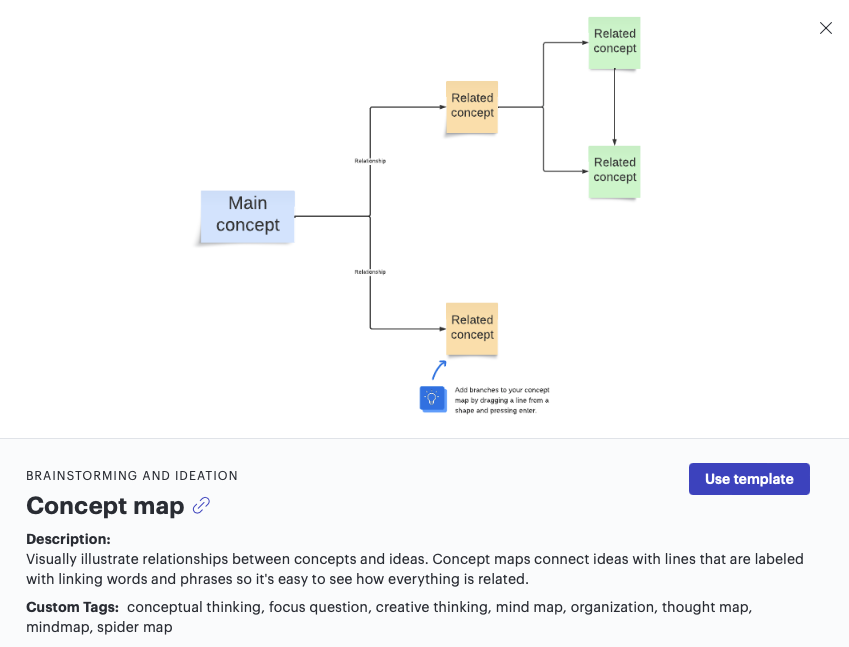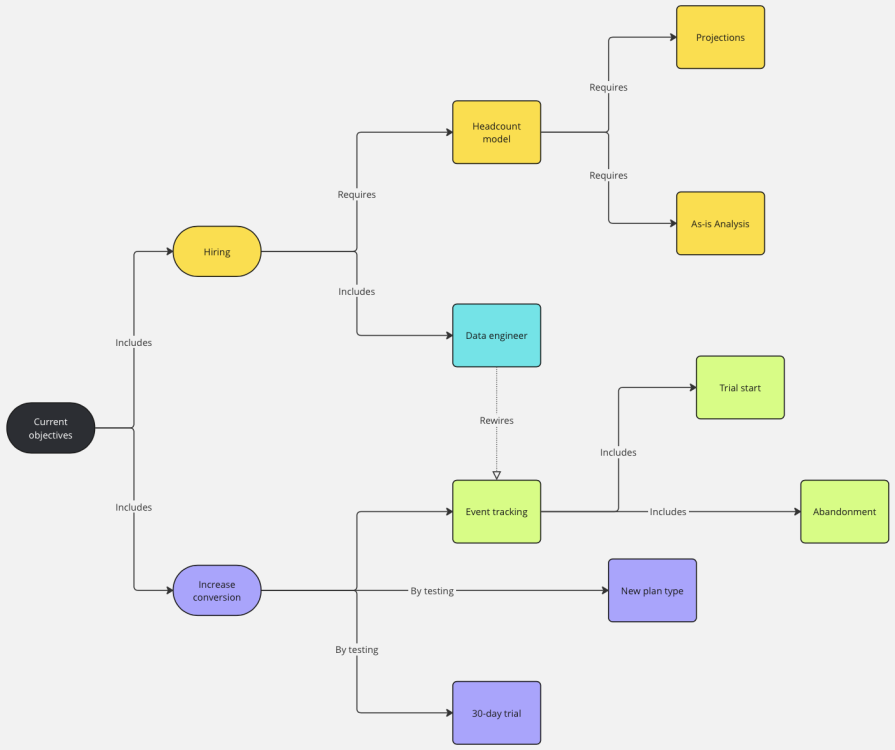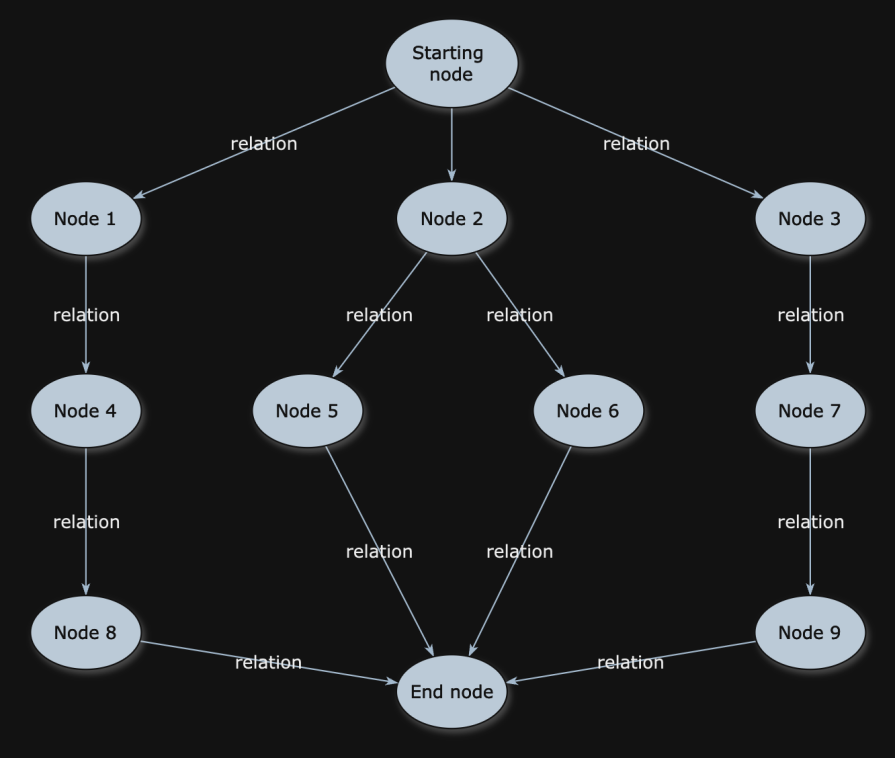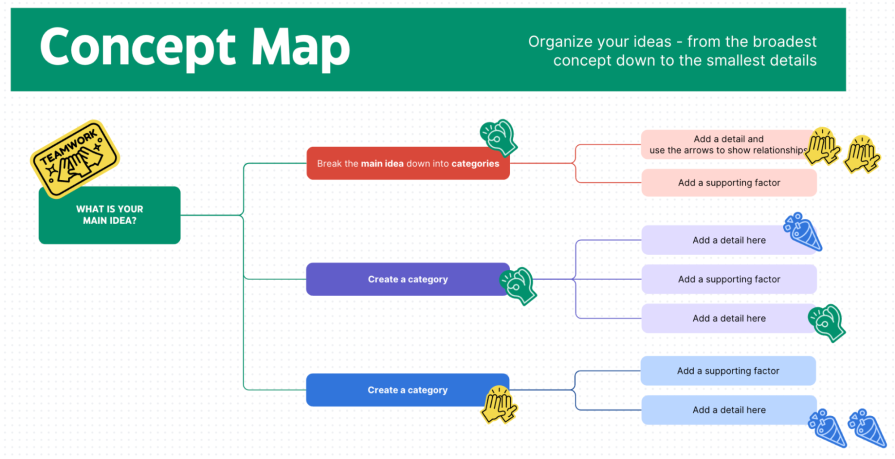Everyone has different learning styles, but there are four main types of learning methods: visual, auditory, and reading/writing, and kinesthetic.

Visual learners prefer seeing to absorb the information and make use of graphs, illustrations, powerpoints, and pictures. Auditory learners take in information via podcasts, one-on-one conversations, videos, and group discussions. Reading/writing learners leverage text heavy documentations, books, and note-taking. Finally, kinesthetic learners prefer to perform a physical activity to learn something as an active participant.
Learning style research points out that 65 percent of the population are visual learners. That’s why companies encourage employees to use methods such as presentations and diagrams that help individuals learn easily.
A concept map is one of the visual learning tools you can use to illustrate concepts. Visual learners can memorize the flows you create and it’ll be easier to discuss complex ideas.
In this article, you’ll learn how to create a concept map with template and tool examples. You’ll also examine which tools to use and why it is important for product managers.
Joseph D. Novak introduced concept mapping during the 1970s to visualize the evolving scientific understanding of students. Since then, it has become a valuable tool for promoting deeper learning across various subjects, and for capturing the expertise of individuals and teams in education, government, and business.
A concept map is a visualization method for concepts and shows relation for each node. With this practice you can make learners play an active role and feel more empathy for the problem. Learners can construct their knowledge by attending the ideation process.
Selection of the concept map depends on your solution. You can use spider mapping, flowcharting, system mapping or hierarchy mapping. All of these can be used for brainstorming, training, or documentation needs.
When you look at a completed concept map, you’ll see three main elements:
To create a concept map, you need nodes and arrows, but you also need a meaningful and hierarchical flow between them. For the flow, you need to have main concepts, sub concepts and ideas as a result:

To create a concept map you need a strong structure for viewers to easily follow the map and understand your focus question. You can use the following steps to get you started.
The focus of the map can be a customer, business, structure problem, or a brainstorming issue you want to discuss. The first step is your focus question. After you know your starting point, you need to make this sentence clearer and shorter. Your main concept should be easily understandable and all participants need to focus on the same problem.
While starting a new brainstorming session, you need to check if there are related problems. In brainstorming activities, this backlog is called a “parking lot” and may be addressed for your focus question. Earlier issues can help you to create sub concepts or relations easier and decrease repeated efforts.
If your company doesn’t have a fix method, you can check ready tools which have concept mapping templates or you can create a basic one with a whiteboard, sticky notes etc. For traditional methods, an empty wall and colorful stickers are the best.
There are also so many digital applications such as Lucid, Miro, Draw.io, or Canva, which offer different options to use free templates or create your own template.
The structure of the concept maps is important; most templates use hierarchical maps which place the main concept in the middle of the map. While creating your map, keep your structure tidy to make your map easier to follow.
For simplifying the map you need to draw relations between nodes that should be aligned with the flow. That means the structure should be arranged from a broader idea to a more specific idea.
If readers need more detail after you create arrows, you need to add descriptions into the arrows to make your map understandable. This step can be used for consolidation of the ideas. Labels should be short, clear and straightforward.
Reviewing process can involve a presentation of your document or brainstorming meeting’s second sessions. After all the ideas are shared, you need to review it carefully before publishing the map as the last version.
Duplicated steps should be removed, irrelevant topics can be moved to the parking lot, and labels and descriptions can be shortened.
Now that you have a template full of ideas, you can reshape the map as a template for later usage. You can upload the template to a drive for easy access and document the steps or basic decisions you discovered.
If you’ll present it to customers, make sure to add colors, product logos, and more description.
As a product manager, your role includes continuous iterations and updates for the documentation you created. Documentation isn’t a one time job; you need to keep it up-to-date if you develop new ideas.
After you make updates, you can add version numbers to documents and share public revision announcements.
Whiteboard and traditional methods are beneficial for team building activities, but for transferring your ideas and documentation to other stakeholders, you need tools to visualize your ideas. Each of these tools allows you to select free templates and instantly start working without worrying about creating your own.
Lucid is a cloud-based virtual whiteboard application and compatible with large-scale software companies. You can find numerous templates for brainstorming and working collaboratively.
In the Lucid app under the templates -> “brainstorming and ideation” section you can open a basic template for concept maps and start to use the template.
After you create your ideas with a concept map, you can create flowcharts, business models and diagrams and link all of them together:

Miro is a tool which includes collaborative working features in an enjoyable and colorful way by empowering 60 million users. It has a large number of icons and objects to use while you are creating a diagram. With this approach, it provides you a way to create easily trackable maps and flows.
Under the use cases -> “mapping and diagramming” menu there are free templates you can open. Miro offers two options for templates: “use pre-filled” and “use blank template.” Blank templates refer only to the required amount of components for each option. Pre-filled templates have full flow with all the required components for each option:

Draw.io is a simple app designed to draw sketch-like diagrams similar to Lucid and Miro. Drawing together and sharing your template is relatively primitive. If you are looking for a quick solution and internal usage you can use it easily.
For sharing, you need to save the diagram to your “Google Drive” or desktop and export it as an image. They have integrations with other software related tools such as GitHub, Dropbox, Atlassian, Sharepoint and OneDrive.
Under file -> new -> map menu you can see five map options. For concept maps, it offers two click and start templates:

Canva appeals to a wider audience in terms of usage as a design tool. You can use Canva for social media post creations, video making, marketing and education, etc.
As a software product manager, you can find creative and stylish templates for presenting your ideas. The best usage for Canva is to check examples and create your own template instead of wasting your time checking pages of options. .
Under templates you can search “concept map” and enjoy thousands of free and perfectly designed templates. You’ll love how the examples are designed to explain usage instructions:

Tools and templates can help you get started with concept maps. They offer a range of options that can appeal to your particular audience.
After you create a concept map with traditional whiteboards or tools, I recommend you create your own template and share with all stakeholders. Collecting different ideas and feedback is an important part of a map. Lastly, please don’t forget to revise and update the concept map.
Featured image source: IconScout

LogRocket identifies friction points in the user experience so you can make informed decisions about product and design changes that must happen to hit your goals.
With LogRocket, you can understand the scope of the issues affecting your product and prioritize the changes that need to be made. LogRocket simplifies workflows by allowing Engineering, Product, UX, and Design teams to work from the same data as you, eliminating any confusion about what needs to be done.
Get your teams on the same page — try LogRocket today.

Most teams fail at autonomy. Learn how clear rules help product teams move faster without micromanagement.

A practical framework for PMs to use AI in ideation without sacrificing judgment, strategy, or decision quality.

A practical five minute revenue estimation method to help product managers compare ideas, drop low impact features, and prioritize smarter.

A practical guide for PMs who want to stop being bottlenecks, delegate smarter, and lead teams effectively with a clear ownership framework.
One Reply to "How to use concept map templates for brainstorming"
AMzing stuff